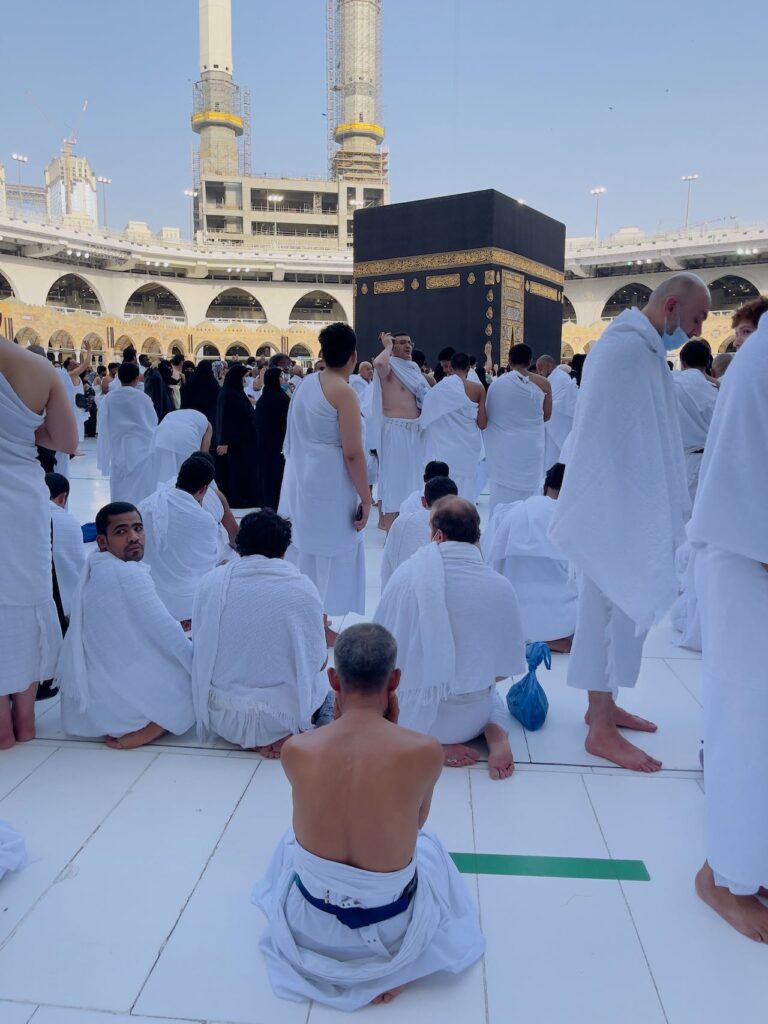Embarking on the sacred pilgrimage of Hajj or Umrah is a profound spiritual experience for Muslims worldwide. Central to this pilgrimage is the concept of Ihram, a state of ritual purity and sanctity that pilgrims assume before entering specific locations.
In this article, we will delve into the significant Ihram places, shedding light on their historical and spiritual importance. From Mecca to Medinah, we will explore the key sites that hold a special place in the hearts of millions of Muslims around the globe.
Understanding Miqat
In Islamic tradition, Miqat refers to the specific boundaries or stations where pilgrims must enter the state of Ihram before proceeding to Mecca for Hajj or Umrah. There are five recognized Miqat points, each associated with a particular geographic location. These Miqat points serve as reference points for individuals traveling from different directions. Here are the five Miqat locations:
Ihram Places
The state of Ihram is typically assumed at a specific location before commencing the rituals of Hajj or Umrah. The designated place where pilgrims enter
the state of Ihram depends on their mode of travel and proximity to the sacred sites. Here are the common starting points for Ihram places:
Firstly, For Air Travel:
If you are traveling by air, the state of Ihram is usually assumed at the airport of departure, which could be in your home country or a transit location.
Many airports have special facilities and designated areas where pilgrims can change into the required attire of Ihram. before boarding their flight to Saudi Arabia.
Secondly, For Travel by Land:
If you are traveling by land, the most common point to enter the state of Ihram is the Miqat. Miqat refers to specific boundaries or stations surrounding Mecca, beyond which pilgrims must enter Ihram. There are several Miqat points, and the one to choose depends on your route of travel
Firstly, Dhul Hulayfah (Abyar ‘Ali):
Located approximately 9 kilometers from Medinah, this Miqat point is for those coming from the direction of Madinah.
Secondly, Al-Juhfah:
Situated around 187 miles northwest of Mecca, Al-Juhfah serves as the Miqat for pilgrims traveling from the direction of Syria and Egypt.
Thirdly, Qarn al-Manazil:
Positioned approximately 47 miles east of Mecca, Qarn al-Manazil is the Miqat for those traveling from the direction of Najd,
which includes Riyadh and its surrounding areas.
Moreover, Yalamlam:
Yalamlam is located around 50 miles southeast of Mecca and serves as the Miqat for pilgrims coming from the direction of Yemen.
Finally, Dhat ‘Irq:
This Miqat point is located approximately 94 kilometers northeast of Mecca and is primarily used by those traveling from Iraq or Iran.
Note That:
It is crucial to research and plan your journey beforehand, identifying the appropriate Miqat point based on your mode of travel and route.
Key Takeaways:
- Miqat refers to the specific boundaries where pilgrims entering Mecca for Hajj or Umrah must assume the state of Ihram.
- There are five recognized Miqat points: Dhul Hulayfah, Al-Juhfah, Qarn al-Manazil, Yalamlam, and Dhat ‘Irq.
- Dhul Hulayfah is for those coming from Medinah or the western side.
- Al-Juhfah is for pilgrims traveling from Syria, Egypt, and North Africa.
- Qarn al-Manazil is for pilgrims coming from the direction of Najd.
- Yalamlam is for those traveling from Yemen.
- Dhat ‘Irq is primarily used by pilgrims coming from Iraq or Iran.
- It is important to consult with scholars, travel agents, or reliable sources to determine the appropriate Miqat point based on individual travel routes and circumstances.
Conclusion
In conclusion, the Miqat points play a significant role in the Hajj and Umrah pilgrimages, as they mark the boundaries where pilgrims must enter the state of Ihram. These points are Dhul Hulayfah, Al-Juhfah, Qarn al-Manazil, Yalamlam, and Dhat ‘Irq.
Note that: Each Miqat is associated with a particular geographic location, accommodating pilgrims coming from different directions.
Observing the proper Miqat is essential to ensure that the pilgrimage is performed in accordance with Islamic traditions and requirements.
In addition, It is crucial for pilgrims to research, plan, and consult with knowledgeable individuals to determine the appropriate Miqat point based on their travel route and circumstances.






